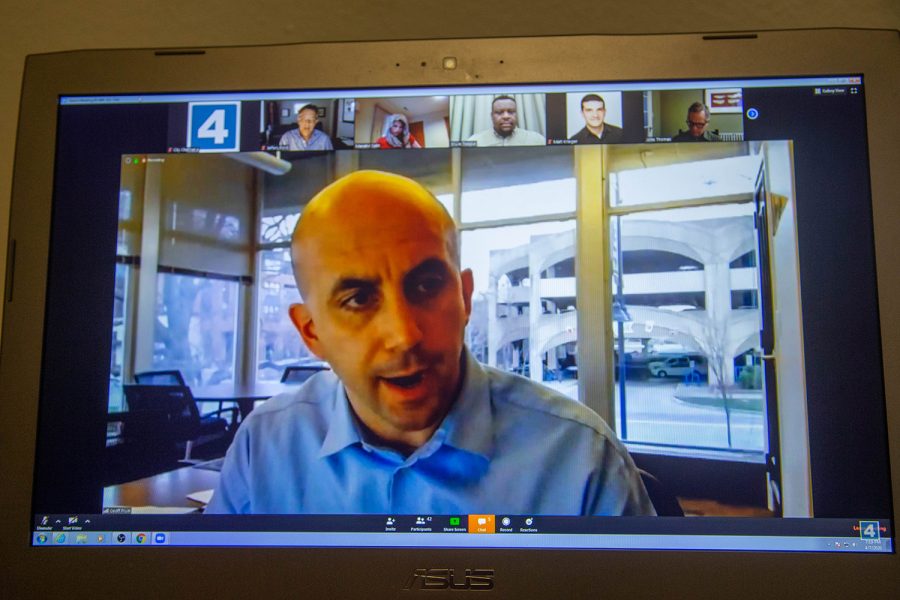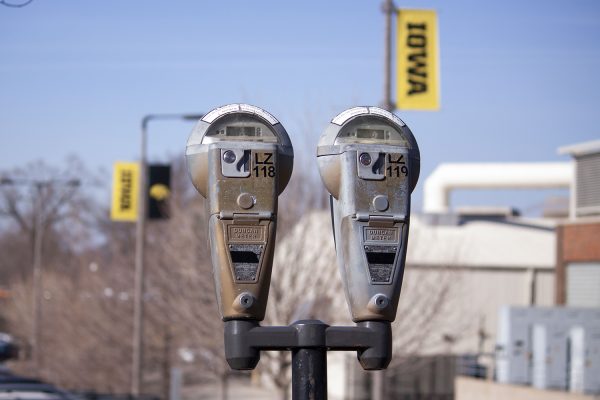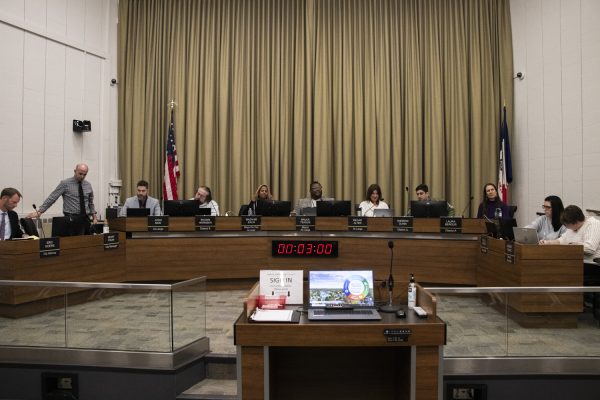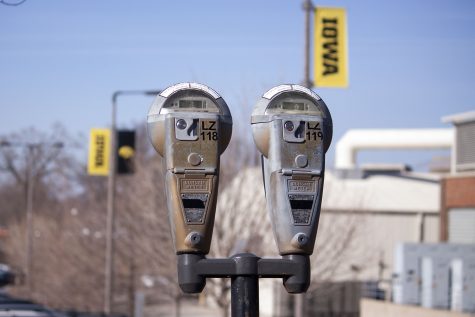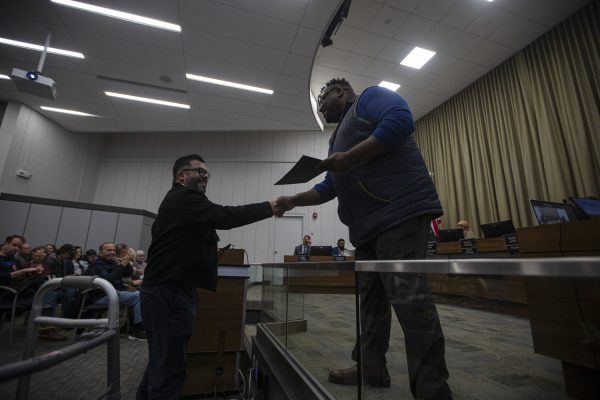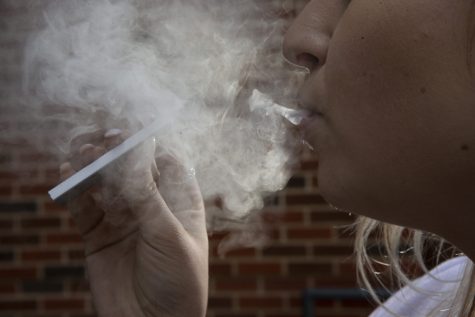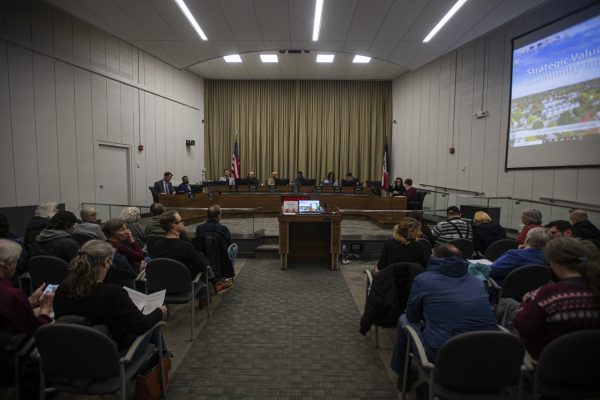City staff removes Market, Jefferson streets one-way to two-way conversion through Capital Improvement Program
Requiring traffic signal replacements, curb ramp renovations, and road repainting, city staff determined the estimated $2.6 million going into efforts to successfully convert Market and Jefferson Streets from one-way to two-way would be more than the city can financially afford right now
City Manager Geoff Fruin speaks at a City Council meeting over Zoom on Tuesday, April 7, 2020. Fruin spoke about the proposed plan to build solar panels in Waterworks Prairie Park and the COVID-19 employee pay plan. (Hayden Froehlich/The Daily Iowan.)
April 7, 2021
The Iowa City City Council’s Capital Improvement Program plan will no longer include the conversion of Market and Jefferson streets from one-way to two-way traffic.
City Manager Geoff Fruin said during Tuesday’s city council meeting that due to the Capital Improvement Program having limited funding, and the conversion not being entirely necessary at the moment, the staff made the decision to remove it from the plan.
Fruin added that although staff removed the item, they are still in support of the conversion of both respective streets from one-way to two-way in future years.
City Senior Engineer Jason Reichart said the conditions of both roads are OK, and neither are in dire need of being replaced this year.
“I would say overall, it’s in decent condition,” Reichart said. “We did identify at least a portion of Jefferson Street that we’re planning to overlay this year. We were planning to take a closer look at Market Street for next year so, I think they’re in ok condition, it’s probably getting to the point that at least portions of them are going to need some attention but I think overall, they’re probably not in terrible condition.”
Fruin said converting these two streets would also involve replacing the outdated traffic signals to better improve functionality and accommodate pedestrian movement.
Along with this replacement, Fruin said there would also be changes made to curb ramps, which forced the cost of this particular plan to estimate up to $2.6 million, which is not currently within the Capital Improvement Program’s budget.
Fruin said within the next five to 10 years, the traffic signals will need to be replaced, which coincide with an appropriate time to convert the streets as well.
City Councilor Pauline Taylor said the removal of this item from the Capital Improvement Program is disappointing to her.
“It seemed as though when we initially discussed this, it had strong support even by the downtown district and the surrounding neighborhoods, the council, and other folks, so I thought it was a go,” Taylor said.
Taylor also added that she remembers a past precedent that had been set regarding increasing estimates on projects, where costs had increased and they were simply modified and remained in the Capital Improvement Program.
With other cities in Iowa such as Des Moines and Cedar Rapids shifting away from one-way streets, Taylor said Iowa City should follow suit and eliminate street formats she called ‘archaic’.
City Councilor John Thomas said he supports the conversion of many one-way Iowa streets to accommodate two lanes of opposite flowing traffic, as they provide better interconnectivity, reduce inappropriate speeding, and reduce negative impacts on adjacent property values.
RELATED: Iowa City leaders see adding traffic cameras as step towards equity
Comparing Iowa City to its northern neighbor of Cedar Rapids, Thomas acknowledged Cedar Rapids’ dedication to converting its downtown area from one-way streets to two-way streets, something that he said prioritizes safety.
“I have a quote here from Jennifer Pratt who is their development director, ‘these two-way conversions are a critical piece to make it feel like a place where you want to live and walk, walk around, and feel safe’,” Thomas said. “If we value safety, both for vehicular travel, pedestrian travel, and bicycle travel, many cities have taken the position that it’s a very important strategy to bring the streets back to two-way traffic, as soon as possible, to ensure safety.”
The city council ultimately agreed with staff recommendations to not go forward with this item and did not instruct staff to do anything differently at this time.
“I want to make sure that folks know we’re still committed to that downtown streetscape plan,” Fruin said. “We’ve invested quite a bit in follow up to that plan when you think of Washington Street reconstruction, with ped mall reconstruction, and a lot of smaller projects that surround it. At least right now it is not the highest priority, but hopefully we’ll get to it and we’ll get to it soon.”



